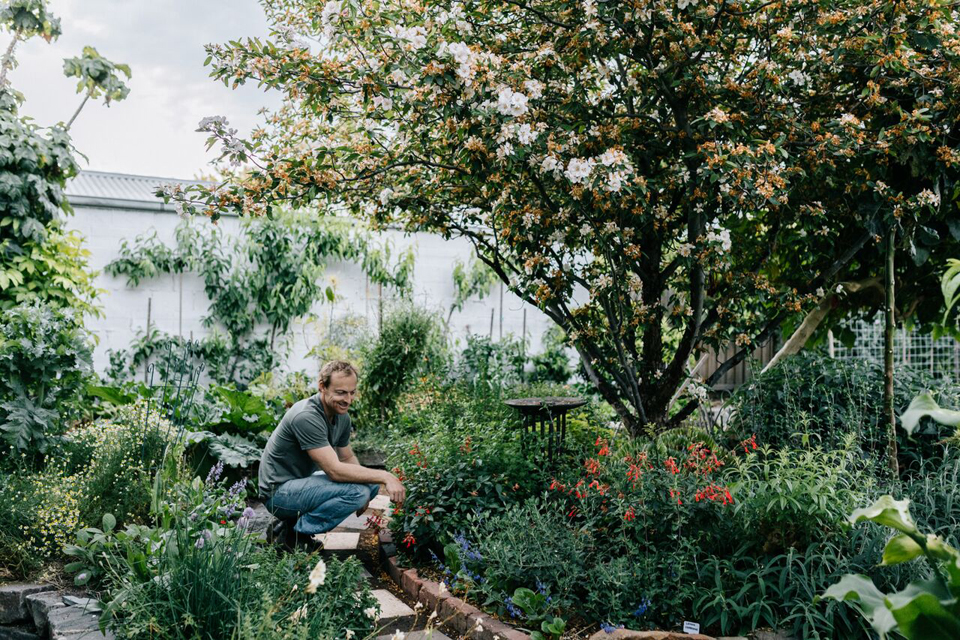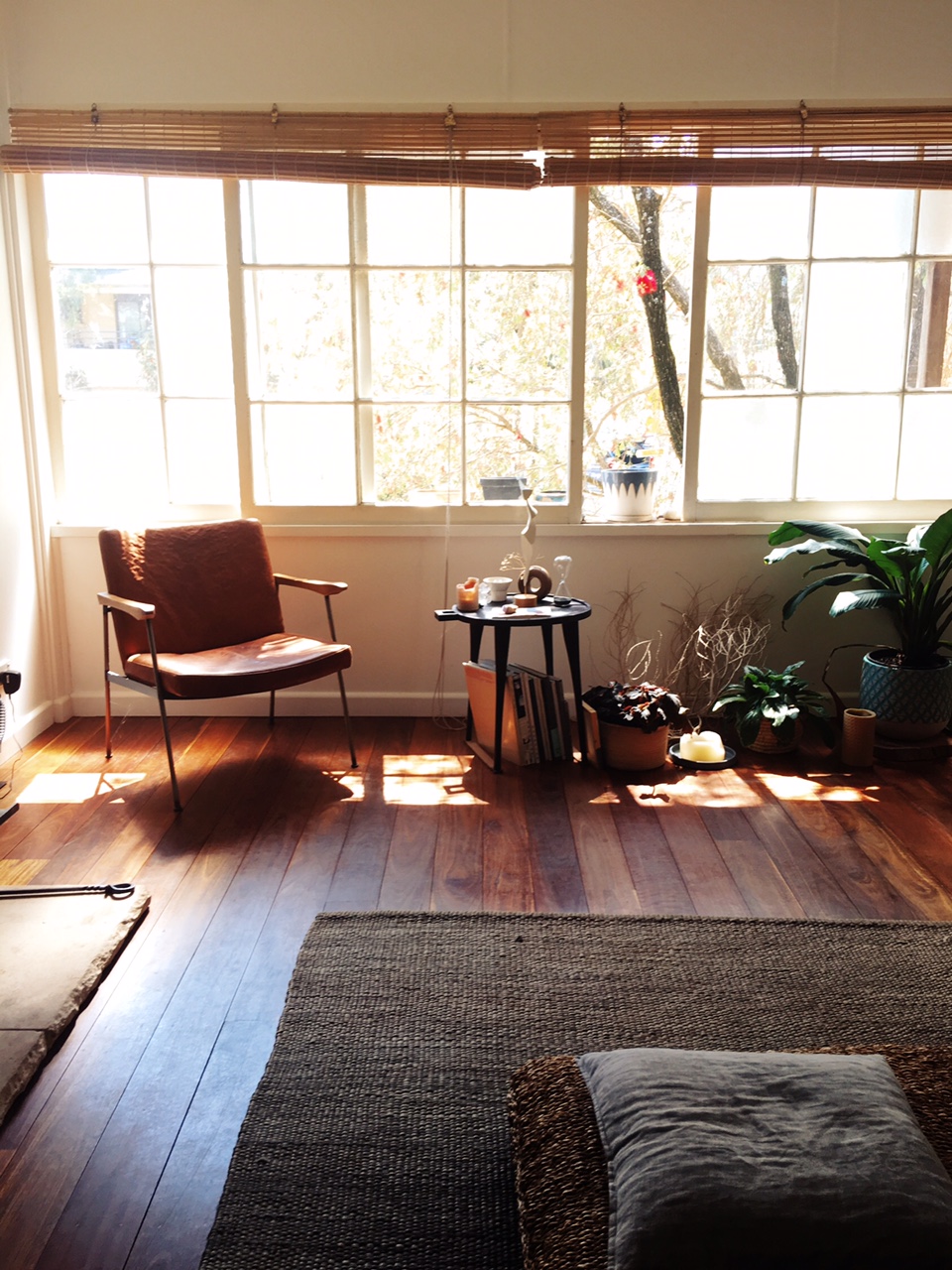Growing & gathering an edible garden through the practices of permaculture covers much more than growing food. It’s also a means of connection, community and joy.
It’s 10am on a Saturday in spring, the sky is grey and the wind is picking up. I’m hoping that, for the sake of the 10 other people I’m gathering with in Ben Shaw’s gorgeous green backyard, the rain holds off for the next two hours during our workshop on urban permaculture. Covering themes from urban garden design and planting strategies to creating healthy soil and managing pests, today’s event intends to teach us how to create a thriving edible garden.
An integrated approach to growing & gathering
“In permaculture, you don’t look at things in isolation,” Ben explains as we huddle around a corner of one of his thriving raised garden beds made with second-hand sleepers. “Everything is integrated. You’re looking at things in a holistic way.” In this bed alone, I see cabbage, chamomile, calendula, fennel, snow peas, potatoes, silver beet, thyme and a huge amount of kale. One of the hot tips we learn is that you maximise space by planting on corners of raised beds. “Diversity is key in a good garden,” he adds. The green thumb completed a permaculture design course in 2010 and now shares his wisdom with the local Geelong community in Victoria through workshops and consultations.
The beautiful crab apple tree sitting in the middle of Ben’s thriving garden takes centre stage, but as we journey through the rest of the garden, we receive valuable insights on growing other types of fruit trees. From planting a pear tree above lavender to encourage pollination to keeping a fig tree inside a chook pen for shade, it’s clear that the practices of permaculture are not just a holistic way of designing a backyard, but ann integrated way of living for all.
A healthy foundation
Ben likens the notion of healthy soil to caring for our bodies with nutrient-dense food. “One of the best things you can do for your garden is to continuously improve your soil,” he explains while picking up some of his soil with his hands so we can see just how alive and diverse it is — with a few worms wriggling around. “We want to create soil that is diverse and thriving. Plants use up the energy — the nutrients — of the soil.”
A means of connection
In terms of how Ben’s permaculture practices feed into his lifestyle, it’s all about connecting with his local community. His neighbours throw scraps over the fence into the compost in the chook pen in exchange for some fresh chook eggs, while the fig trees in his backyard are cuttings from his neighbours across the road, who brought them from Greece decades ago. “That connection is through food,” Ben shares.
What I quickly learn throughout this experience is that the laughter you share with others when swapping stories about soil, pests and foraging is just as profound as the practical takeaway tools you get from the day. While the knowledge feeds our minds and the produce feeds our bodies, the connection feeds our souls. I leave the workshop with a handful of freshly picked snow peas and a surge of inspiration running through my body. Growing & gathering is a powerful means of connection and inspiration that no doubt facilities a greater sense of being in the world.
Words ALLY MCMANUS
Want to learn more about being inspired? Visit our inspired archive.




